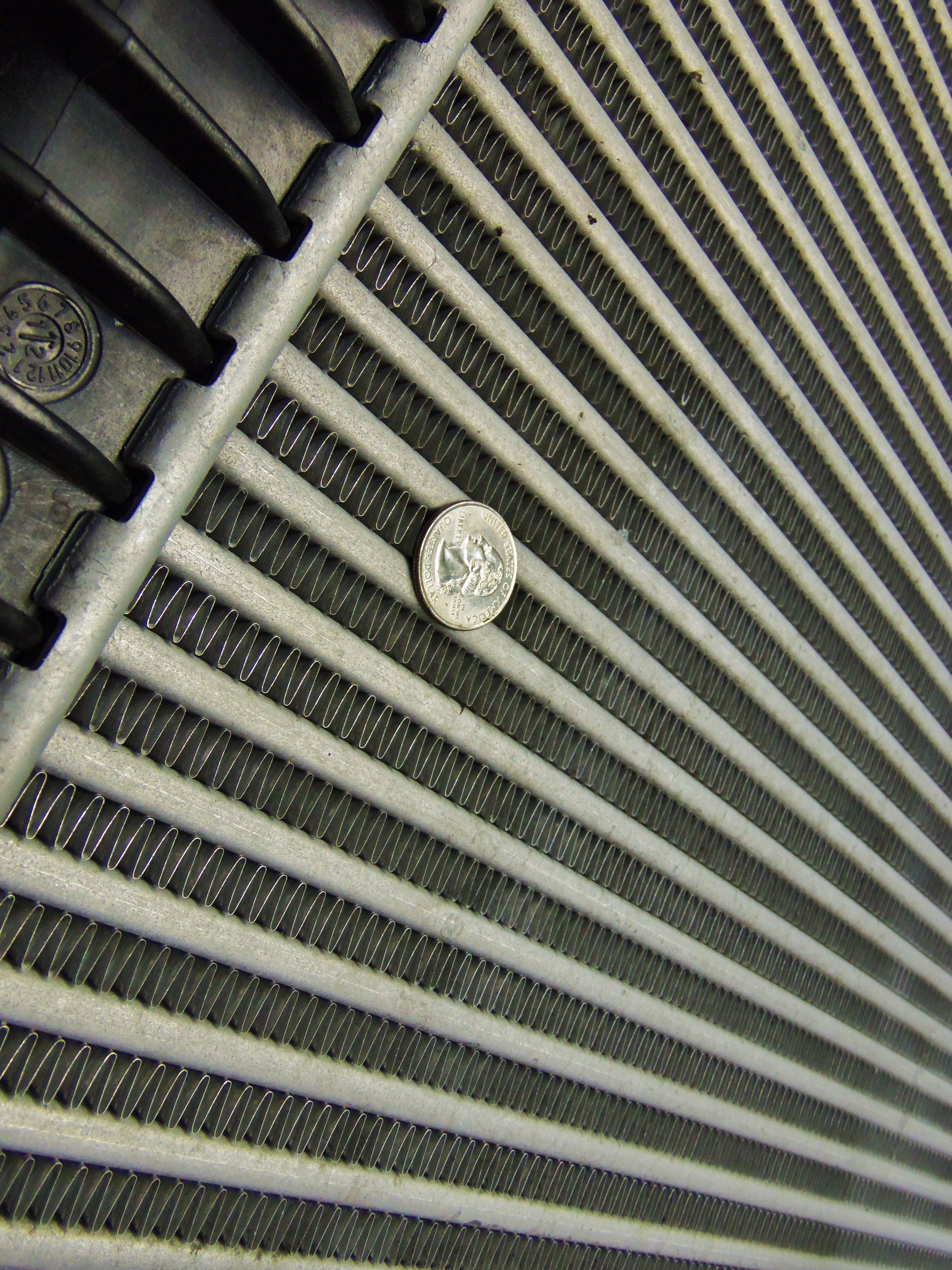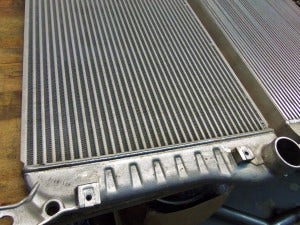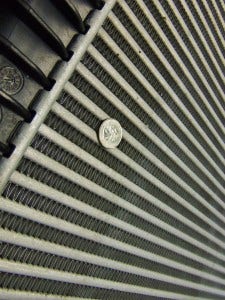
Mishimoto 2011+ Chevrolet/GMC 6.6L LML Duramax Performance Intercooler, Part 2: Factory Intercooler and Project Goals
Interested in purchasing this Duramax Intercooler? Check out the product page for more information!: Intercooler Kit, fits Chevrolet/GMC 6.6L Duramax 2011-2016
Welcome back! In our last segment we removed the factory intercooler so we could determine if this project would even be necessary. The good news is, all that work was not for nothing; our team found several aspects of the factory intercooler that could be improved. Check out a few more detailed images of the factory intercooler.
First, a peek at that interesting metal end tank we discussed in part 1 of this article.

Factory LML intercooler metal hot-side end tank
Now let's take a look at the core!

Factory LML intercooler core
So, what do we gather from all this data? The factory intercooler is a reasonably sized unit with a well-designed core. From our initial inspection, we believe it should support factory and mildly modified trucks without issue. That being said, there is certainly room for improvement. The plastic end tank used on the cold-side is going to be a weak point. With past projects and vehicles, we have seen that the use of plastic in both pressurized CAC systems and coolant systems has been a concern. Plastic is a great lightweight material, which transfers heat efficiently and is rather inexpensive to manufacture on a large scale. The main pitfall of this type of tank is decreased durability. Over time, the CAC system is exposed to huge variances in heat and constant pressure. This will weaken the plastic, leading to a likely failure in the form of a crack, or a separation of the core from the tank. This is even more likely if your truck is modified and/or the boost pressure is increased.
Second, this intercooler uses a tube-and-fin core. This solution is inexpensive, sufficient, and practical, but it does not provide the efficiency of a bar-and-plate core. Upgrading to a bar-and-plate core can have an immediate impact on your truck.
We also found that the factory radiator support has a ton of room for expansion of the cooler. Increasing the physical size of the cooler will have a direct impact on the exchange of heat as well as the power support that our product will provide.
With basic data obtained from the factory intercooler, we set some guidelines for our engineering team to begin designing a prototype intercooler.
Project Goals
Project Objectives
- Intercooler must be a direct fit and require no vehicle modification.
- Intercooler volume must be increased.
- Design a core dense enough for optimal heat transfer.
- Fully test the product to reveal improvements and benefits.
As always, let's evaluate these goals and discuss each to ensure we have an understanding of what we wish to accomplish.
Fitment
As with most of our projects, proper product fitment is going to be a major focus for our team. This intercooler needs to bolt into place just like the factory unit, and it needs to function with all factory shrouding and mounting points. Our customers expect to receive great value for the money they invest in our products, and an ill-fitting component is a great way to turn off potential customers. We will be test fitting our prototype numerous times to ensure that it fits perfectly.
Core Enlargement
Enlarging a heat exchanger core is a great way to improve its efficiency. Several other factors go into this, however. It is a fact that increased volume will provide support for vehicles with greater power and higher inlet temperatures. Additionally, the improvement in volume will allow for greater surface area and heat transfer contact points, which will result in a huge improvement in cooling efficiency. Our goal will be to increase the size of this heat exchanger as much as possible without compromising our first goal on the list. The factory intercooler core specs are listed below.
Length: 36.75" (93 cm)
Height: 23.0" (58.5 cm)
Depth: 1.5" (3.8 cm)
Core Design
Simply increasing the size of the core is not enough for our team. We will be focusing quite a bit on the composition of our core to ensure that we develop the most efficient product possible. We will be designing two prototype cores with differing bar-and-fin sizes to compare their effects on heat transfer and power output. A large core is only as efficient as the density of its bars and fins. Core design and core enlargement are equally important goals.
Product Testing
At our fantastic facility here at Mishimoto, we will be testing our prototype intercoolers thoroughly to provide real-world data and comparisons against the factory intercooler. Our goal is to show what our cooler can provide for your truck, so you can make an informed decision as to whether it is a modification you would like to pursue. We utilize PLX testing sensors and we also have an in-house Dynojet dynamometer that we like to use as much as possible! Check back later on in this article series for a video of the pulls!
Once our goals and objectives were outlined, we could move forward with designing our intercooler prototypes. Check back with us next time for a look at the designing phase and a peek at our prototype unit.
Thanks for reading!




